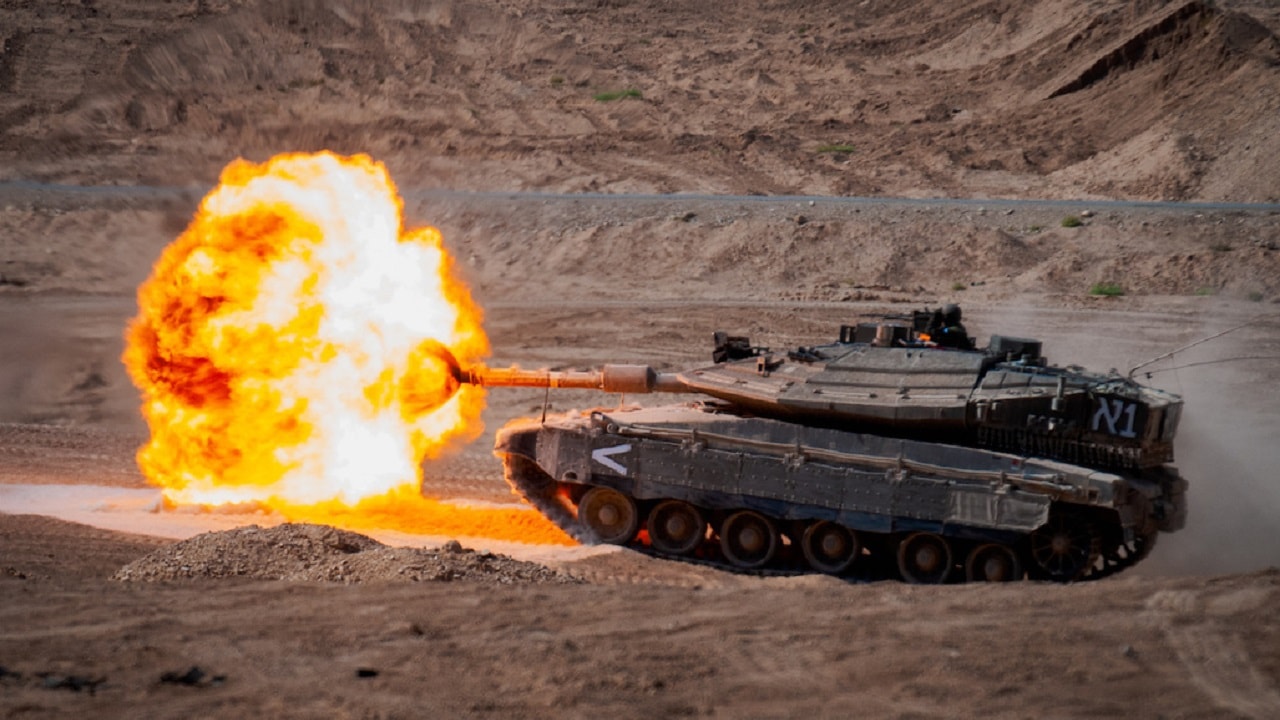On May 10 2021, fighting escalated dramatically between Israel and the militant groups Hamas and Palestinian Islamic Jihad. It all started when the Gaza-based militants began launching a barrage of missiles and rockets toward the Jewish state.
Over the next 11 days, more than 4,300 projectiles flew toward Israel, targeting civilian centers across the country. Prior to the escalation, discord in East Jerusalem had stoked tensions on the ground for weeks. Access to the Al Aqsa Mosque, property disputes in Sherikh Jarrah, and Hamas’ exploitation of election-related upheaval in Gaza all contributed to the flare-up. While Israel’s Iron Dome missile defense system thwarted most of the rocket and missile launches, the size and scale of the militants’ arsenals was alarming.
Deadliest Israel-Hamas Fighting in Years
Hamas is the Palestinian Islamic extremist organization that governs Gaza. The group originated in 1988 following the first Palestinian intifada (uprising) against Israel. It explicitly calls for the eradication of the Jewish state. Regarded as a terrorist organization by the U.S., Israel, European Union, and United Kingdom, the group is known for carrying out suicide bombings and using human shields to perpetuate attacks targeting Israelis.
In the 1990s Hamas claimed responsibility for scores of suicide bombings that plagued Israel. While Hamas and the Israel Defense Forces have exchanged fire often, 2014 marked the deadliest year of conflict. During nearly two months of fighting, more than 2,000 Palestinians and 73 Israelis were killed.
The 2021 flare-up saw the deadliest fighting between Israel and Hamas since 2014. Following a few days of sporadic violence near the Al Aqsa Mosque on May 7, the situation escalated. Hamas demanded that Israel withdraw its security forces from the compound after hundreds of Palestinians were injured in clashes.
On May 10, militants launched hundreds of rockets toward Israel. Hamas leader Ismail Haniyeh praised the terror group’s actions as “defending Jerusalem.” Iranian Supreme Leader Ayatollah Ali Khamenei blamed Israel for the escalation in violence and encouraged Palestinian militants to continue their assault. The ayatollah said that, “(Palestinians) must continue this path. One can only talk with the language of power with these criminals. They must increase their strength, stand strong, confront the enemy, and force them to stop their crimes.”
Iranian Support at the Foundation of Conflict
Iran’s inflammatory rhetoric came as no surprise. As a longtime financial supporter and provider of weaponry to anti-Israel groups, Iran is largely responsible for the scope and scale of projectile attacks from Gaza. Despite a blockade on Gaza imposed by both Israel and Egypt, Iran has mastered the art of using illicit channels to smuggle arms to Hamas. A few days prior to Hamas’ initial rocket barrage, the Middle East Media Research Institute circulated a series of videos depicting members of both the PIJ and Hamas bragging about the significant assistance Iran provides.
Hamas and Islamic Jihad launched a variety of rockets and missiles into Israel during the 2021 flareup. One of Hamas’ military units, the ‘Izz Al-Din Al-Qassem Brigades, claimed it fired a Kornet anti-tank missile north of the Gaza Strip. As reported by MEMRI, in 2021 a senior Hamas official disclosed that, “We have had the Kornetin our possession since 2012, as have our brothers in Hamas. In all the campaigns [against Israel]… the resistance has used them… All the conventional weapons reached [Gaza] via Al-Hajj Qassem Soleimani, Hizbullah, and Syria, and the entire [resistance] axis played a part in transporting them.”
The official added that Soleimani had personally “supervised and directed the transfer of the missiles to Gaza.” Gen. Qassem Soleimani was a revered commander of the Islamic Revolutionary Guard Corps until he was assassinated in a U.S.-led airstrike in January 2020.
Iranian ties to Gazan militant groups date back to the 1980s. Over the years, Iran has provided military equipment, training, and monetary funds to the anti-Israel groups, greatly expanding their capabilities. In the 2021 flare-up, Hamas’ ability to fire whole volleys of barrages targeting faraway targets like Tel Aviv showed a capability that had not been seen before. The Palestinian Islamic Jihad mostly launched Badr 3 rockets, which were reportedly designed and tested in Iran. Equipped with a heavier warhead, these rockets were able to strike the Israeli cities of Netivot and Ashkelon in last year’s conflict. Israel’s then-Prime Minister Benjamin Netanyahu recognized the critical threat Iran’s contributions to Gaza’s arsenals posed to Israel. He bluntly asserted that, “If Iranian support is removed, the organizations will collapse in two weeks.”
Although Israel and Hamas agreed to a truce on May 20, tensions have not fully dissipated. Over the last few months a wave of terror attacks has swept Israel, resulting in the deaths of 19 citizens. According to the Times of Israel, a security official reported that at least “66 terror attacks were foiled since mid-March,” adding that approximately 500 individuals have been arrested on terror-related suspicions. If violence continues to erupt in Israel and the West Bank, the potential for a renewed flare-up between Gaza’s militants and Israel is high.
Maya Carlin is a Middle East Defense Editor with 19FortyFive. She is also an analyst with the Center for Security Policy and a former Anna Sobol Levy Fellow at IDC Herzliya in Israel. She has by-lines in many publications, including The National Interest, Jerusalem Post, and Times of Israel.

